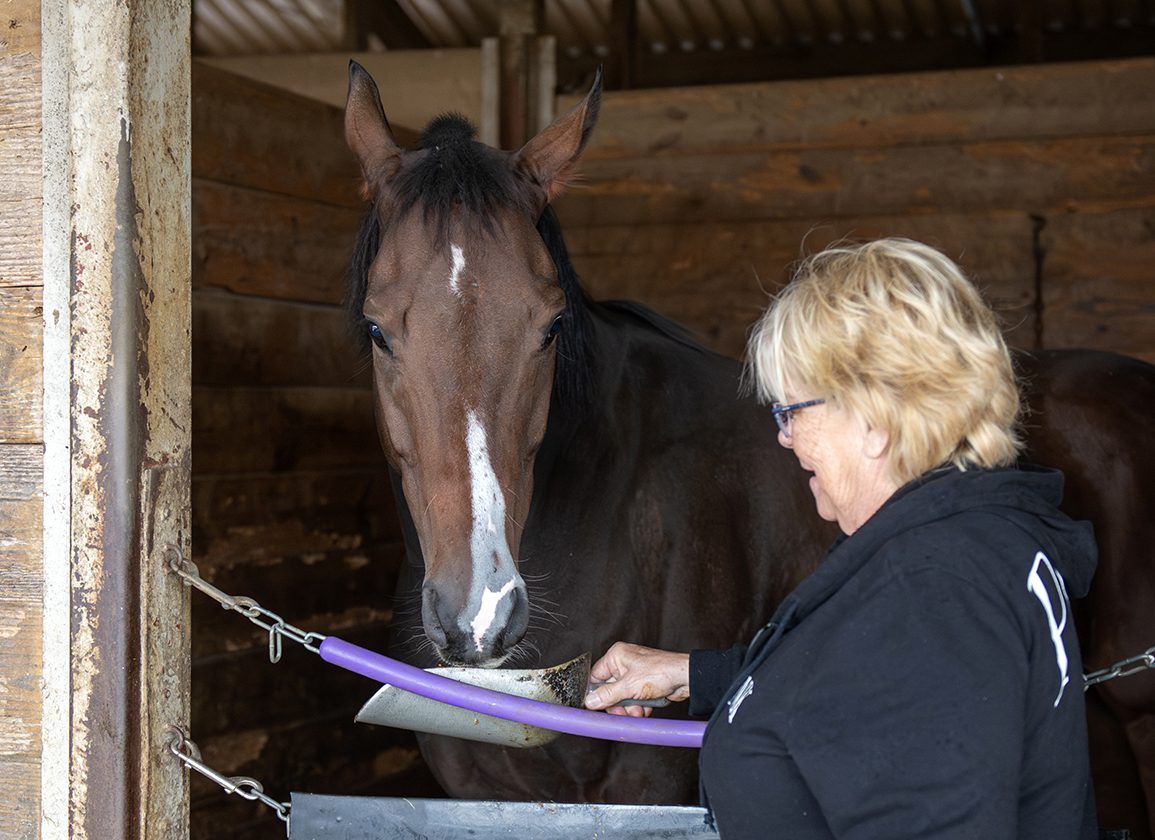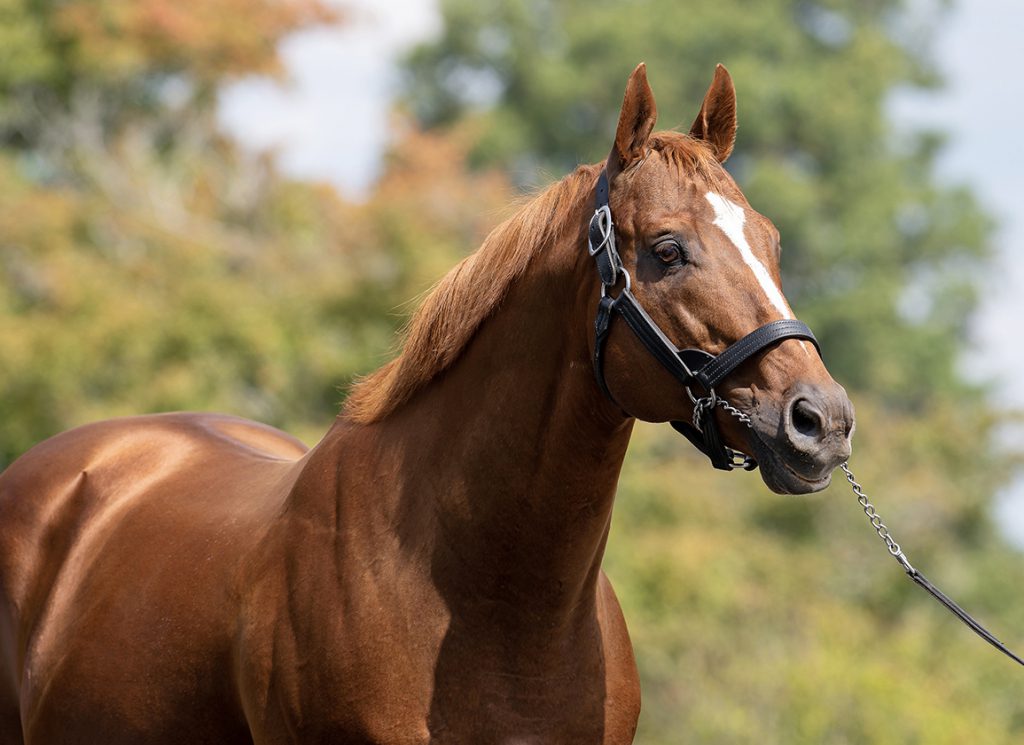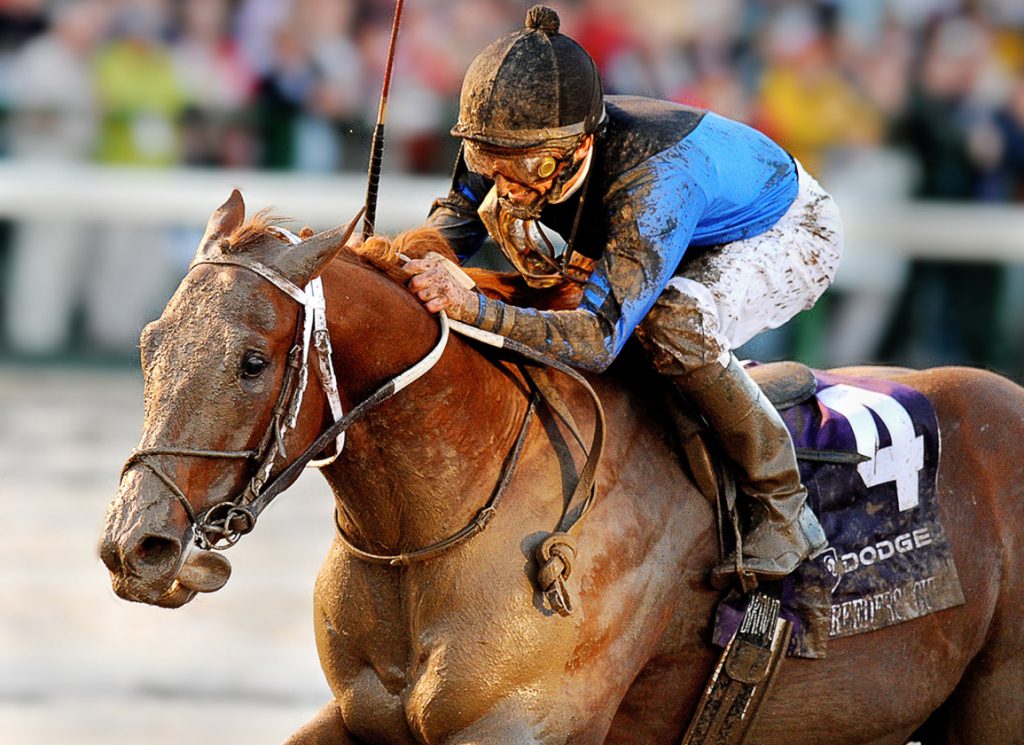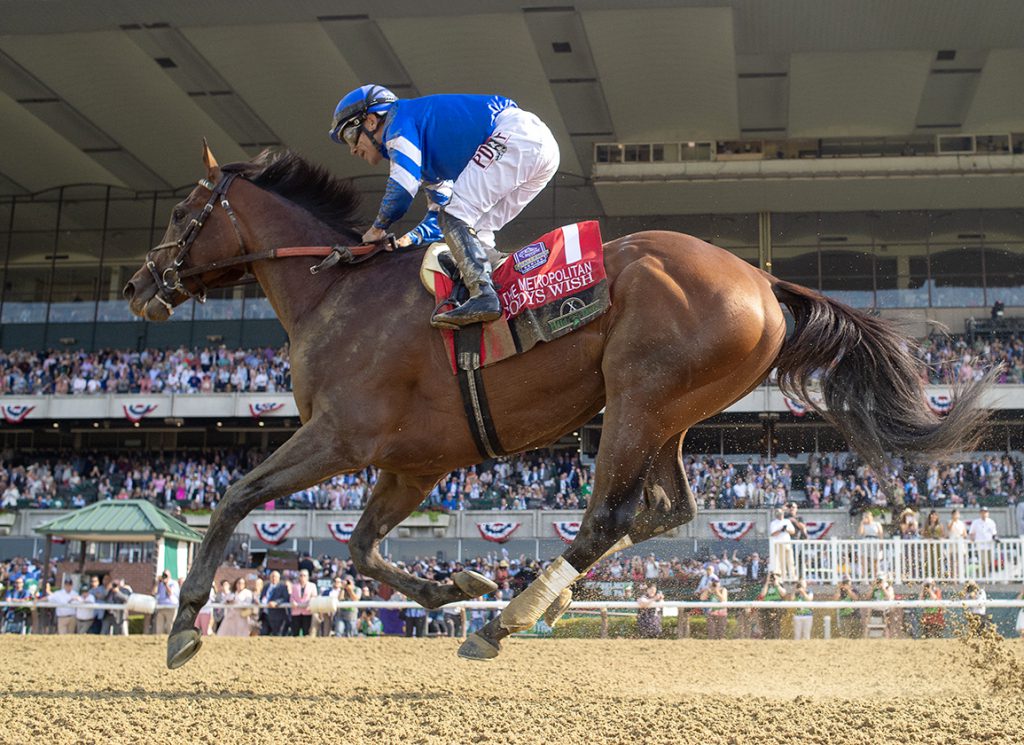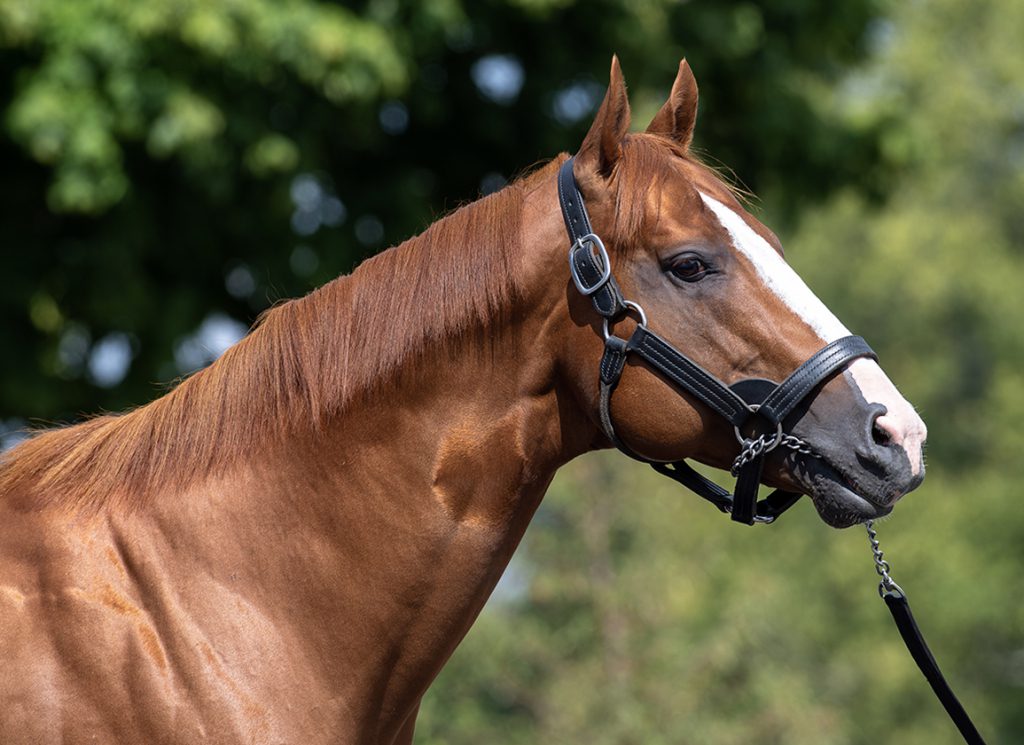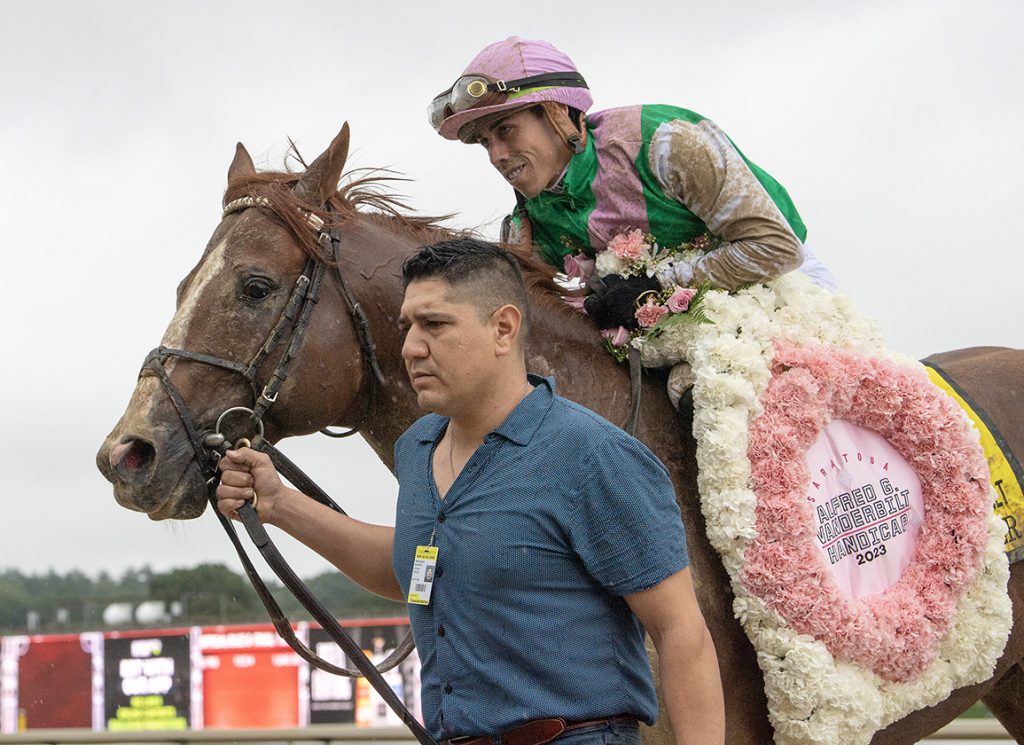Trainer John Pimental was mired in a 1-for-46 streak on the morning of July 28, 2023. But the 68-year-old horsemen knew he didn't have life as bad as those numbers suggested.
He was taking care of eight Thoroughbreds for a good, longtime client. He enjoyed escorting runners to the Monmouth Park starting gate with his 17-year-old pony, hustling as much business as he could on race days when his own horses weren't in, the way he had always earned a living as a second-generation racetracker who grew up on a Massachusetts horse farm.
His wife Diana, 65, was back under the shedrow helping run the stable after having recently spent eight days in the hospital because of Lyme disease, and the two were thankful they had carved out a nice little circuit for themselves after their home track of Suffolk Downs went belly-up in 2019. They now spent summers on the Jersey Shore while wintering at Tampa Bay Downs, in between making time to dote on their five grandchildren and one great-grandchild.
John's training record predates the 1976 advent of the Equibase database, so his lifetime totals exceed the published 250 winners from 2,964 starters. But beyond statistics, if you get him to talk–John is a man of few words who is more comfortable letting the more gregarious Diana speak for the two of them–he might grudgingly admit how proud he is about his reputation for keeping older horses sound.
Or how he has long been respected for his horsebacking skills, and has routinely been called upon to fill in as an outrider.
Or how the only Association of Racing Commissioners International violation on his record in nearly a half-century of training was a $100 fine for once not having a foal certificate on file.
But that clean record–and any semblance of normalcy for the Pimentals–shattered on that sultry summer Friday on the Monmouth backstretch.
That's when agents for the Horseracing Integrity and Welfare Unit (HIWU) descended upon John's stable and upended his world: one of his horses had tested positive for 193 picograms per milliliter of methamphetamine, a street drug of abuse that is classified as a “banned” substance in racing, meaning it is never supposed to be found in any horse.
“July 28 is when our whole life changed,” Diana recalled in an interview this week. “Three men from HIWU came in, looked at John, and said, 'You're suspended. Take your [stable] sign down.'”
John's stunned reply was to ask the strangers under his shedrow if this was a joke.
“It was crazy. They told me they were former FBI agents, and they were really firm about everything,” John said.
As Diana, a former racing office worker and jockey agent who has also spent her entire life on the backstretch, recalled it, “The HIWU guy came right into the barn and said, 'This isn't going to be nice.' Those were exactly his words.”
The gelding who had tested positive was Golovkin (Mshawish), who had run sixth and last in a May 29 Monmouth sprint. The 5-year-old had been the only horse in the barn owned outright by John, but Golovkin had been claimed away that day for $5,000 and hadn't been in the stable for two months.
HIWU, which operates the Horseracing Integrity and Safety Act (HISA)'s Anti-Doping and Medication Control Program, had just begun testing the nation's Thoroughbreds the week before Golovkin's race. Although John didn't know exactly what type of penalty he'd be facing, he knew it could be career-threatening.
Then trouble escalated to a higher level.
“They searched our rooms, and then said that they had to search the truck,” Diana said. “When they searched the truck, we had an old container of thyroid [medicine]. We had put it in the truck and totally forgot about it. I was shocked when he pulled it out.
“When he said, 'What is it?' I wasn't going to lie. I couldn't do it. I couldn't lie,” Diana said. “I told him it was [Levothyroxine]. I knew we weren't supposed to use it on racehorses, but I didn't know at the time it was a banned substance that you couldn't even have in your possession. We had used it for the pony.”
John soon learned his HIWU fate: He was looking at being ruled off for three years (18 months per violation) and a fine of $25,000 ($12,500 per violation) as the responsible licensee.
Even as their heads were reeling from trying to process what they were being told, what the agents allegedly said next truly disturbed the Pimentals.
“The men from HIWU told John, 'If you give us some information [on other people breaking the rules], we'll cut you some slack,'” is how Diana recalled the conversation.
“Come on, you don't know somebody that's doing something?” Diana said the agents prodded.
John's curt reply was that he'd been minding his own business as a trainer for nearly 50 years, and he wasn't now about to start getting involved in what other racetrackers did.
“And that's the truth. Even if he knew something, he would never say something,” Diana said.
So what's life been like in the three months since?
“A lot of sleepless nights, you know?” John said. “That's all I do, is think about this all the time.”
Fighting the Case
The Pimentals initially contacted a lawyer, but got sticker shock when the attorney told them they'd need to pay a $7,500 up-front retainer, and that seeing the case through to its conclusion might cost thousands more. Still, John thought he had a pretty good shot at fighting the meth positive, which he guessed had been triggered by environmental contamination from a drug user who came in contact with Golovkin either in the starting gate or in the test barn.
One New Jersey racing official, whom the Pimentals did not want named in this story because they didn't want to get that person into trouble, told them the picogram level of the meth finding was akin to “taking an Olympic-sized swimming pool and putting one more drop of water in it.”
That official added that if the state were still doing this type of drug testing instead of HIWU, John wouldn't be facing any penalization.
The Pimentals said there were inconsistencies in the HIWU reporting, too. They showed TDN John's charging document, which initially states that Golovkin's blood sample was collected on May 28, which does not match the actual May 29 date of his race (another section of that document has the correct date, however). They also said that the test barn chain-of-command paperwork purportedly shows a different groom than the one they hired as having signed the required form.
The Pimentals said they'd like to square those who-and-when discrepancies with actual video footage from the test barn, but have been told Monmouth has no such security cameras.
They paid $2,078 to have the split sample tested, and weren't surprised when it, too, came back positive for meth.
Without legal counsel, they prepared a defense as best as they could for what they thought was an opportunity to plead their case.
But they misunderstood the purpose of a Zoom meeting with a HIWU attorney, and when they attempted to defend themselves, they were told the videoconference was for scheduling and logistics purposes only, and was not the actual hearing. HIWU's lawyer strongly advised them to get an attorney, Diana said, explaining that there was a lot of paperwork that still had to be filed properly before that hearing date.
“It's just John and I, nobody else is working on these horses,” Diana said. “None of us has ever done anything. John's never been in trouble, even since being a young kid at the track. Never done drugs. I tried to explain to them, we're not bad people. We're good people. We just need help. Let us work with you to show you that we didn't do this.”
At this point in retelling the tale, Diana lets loose with the tears she has been trying to hold back the entire time.
“I'm sorry. It's just that they've taken our horses. They've taken our lives. This is wrong,” Diana said.
Out of Options
John and Diana talked over their options. Preparing for the hearing on their own was too daunting and they couldn't afford a lawyer.
“We had to give up because we were just going broke. We couldn't afford to keep going any more,” Diana said. “We're not getting any income in. We go from getting paid for taking care of eight horses to nothing, and John's like, 'We just can't do this. We're going to not have anything left. No savings, no nothing.'”
They got back in touch with the HIWU attorney and said they just wanted to “end it.”
That meant John would have to sign an “admission of rule violations” and “acceptance of consequences” document that would be termed a “case resolution without hearing.”
John balked at admitting that he doped a horse. But he signed the document anyway on Sept. 25 with the understanding that he wasn't admitting to any doping, and was instead acknowledging the rule violations and accepting his consequences.
There's a mistake in the official version of that document posted online by HIWU. It's probably just a cut-and-paste error, but it continues the pattern of sloppy documentation the Pimentals said they found in other HIWU-issued paperwork: after listing John by name at the start of the document, it later refers to him as “Mr. Ruiz” when citing his sanctions.
By the time John signed away his licensure, the eight remaining racehorses in his stable were long gone, having shipped out to a different trainer at Delaware Park.
The owner of that string, the husband-and-wife partnership of Juan and Margaret Palomino, had employed the Pimentals for about seven years. Margaret told TDN she thought it was “ridiculous” when she first heard the news about John's violations, and that she believes HISA and HIWU's penalties are too draconian for small-scale horsemen.
“It's like they want smaller outfits out of business,” Margaret said. “When this happened to John, we didn't know where we were going to go or who would train our horses. We don't have deep pockets. I talked to my husband, and Juan said, 'We'll just sell everything and get out of the business.' And I said, no-that might be what they want.
“It's like condemnation without any representation,” Margaret said. “John and Diana were absolutely terrific. We're still friends and we'll always be friends. Last year we had a terrific meeting at Monmouth. We made over $200,000. This year, because of the circumstances, I think we made $31,000.”
The Pimentals' pony has been sold but has not yet shipped out of the stable. Diana said HIWU cut them a small break by allowing them to go onto the Monmouth backstretch twice daily to feed the pony until the new owner comes to get it.
The Pimentals are also still allowed to go in and feed Golovkin, who was transferred back to John when the HIWU ruling voided the gelding's May 29 claim.
Diana said they are having trouble finding a new home for Golovkin, who over the summer twice finished last for the owners who had claimed him, and then had to sit out a mandatory 60-day period of inactivity that meant he couldn't race or have a published workout.
“They took our livelihood away,” John said. “I'm not guilty, but I can't prove it, because the money that I'd have to spend to fight it, I can't do it. And I think what they're doing is making the fines so high that people have to get out of business. They just step in and take over.”
From Welfare Line To…Welfare Line?
John's best trainee, about a dozen years ago, was a rugged grass sprinter named National Hero, who twice got voted New England's turf horse of the year.
But the Thoroughbred who helped get John his only real national press was Welfare Line, an ornery 9-year-old gelding purchased by John in 1994 for $1,500 after winning 15 races from 116 starts, primarily at the lowest levels of New England racing.
John worked patiently to transform “Welfie” into a gate pony, and they were inseparable partners on the track until 2016, when the gelding was retired from ponying.
“That $1,500 was the best investment I ever made,” John told Mike Henry of the Tampa Bay Downs media team back in 2019. “Once we converted him over, he wasn't tough anymore. We'd bring a racehorse to the gate, and when I'd turn Welfie around to get away, he would squeal and let me know how much he loved his job. He was a good 'catch' horse, too. I used to be an outrider at Suffolk, and he wasn't shy about catching a loose horse. He was just made for the job.”
Even after his second retirement, Welfie never left the shed row, and when the Pimentals were stabled at Monmouth, the backstretch trolley tours knew to stop at their barn so guests could pet, pose for photos, and feed peppermints to the grand old gelding, an equine ambassador who lived to age 34 before dying from natural causes.
Four years later and facing banishment, John notes with dark humor that he has gone from caring for Welfare Line to possibly being on a welfare line.
The Pimentals said longtime backstretch friends have reacted with sympathy for John's predicament. Tampa Bay Downs even offered Diana her old job back in the racing office for the season that starts next month.
John has tried to see if he can get non-training work at Tampa, but he's found out that he's not eligible for work that puts him even remotely in contact with HISA-covered horses. He's been told “no” for being an outrider, working as a stall superintendent, driving a feed truck and laboring on a nearby horse farm.
“He cannot even go the frontside,” Diana said. “What's he supposed to do? I mean, this is all he's done his whole life, the horses. That's his whole life, and they just ripped it out from under him.”
What might he try outside of the sport?
“Walk dogs or something? I don't know,” John said.
The Pimentals celebrated their fiftieth wedding anniversary in subdued fashion last week.
“Friday the thirteenth, no less,” Diana quipped, managing a wry laugh about their run of bad luck.
They were supposed to have already left for Tampa, but Diana's blood pressure has recently spiked, and her doctor advised not travelling until they are sure that her new medication to control it is working.
“I keep telling them this whole situation is why my blood pressure is so high,” Diana said.
Ever since John signed off on his HIWU admission and acceptance, the couple has been nagged by doubts about whether or not there is still some avenue of appeal open to them. They really don't know the rules well enough to figure out if there is a next step.
It turns out there is. But the Pimentals' window of opportunity is closing fast.
Alexa Ravit, HIWU's director of communications and outreach, told TDN via email that, “John Pimental has until Oct. 26 to seek review from an Administrative Law Judge at the Federal Trade Commission (FTC),” which oversees HISA.
Ravit explained that in John's case, “there was no decision or determination by HIWU or the Arbitral Body. The violations have been admitted and the consequences accepted by the Covered Persons. If a Covered Person who has signed such an admission came to HIWU and requested that he/she be permitted to withdraw the admission, HIWU would consider that request if it was made within a reasonable time period, e.g., within the 30 days provided to seek review by the FTC.
“If HIWU accepted the withdrawal of the admission, the notice of sanctions would be withdrawn, and, in the case of Equine Anti-Doping Cases, the matter would be re-initiated before the Arbitral Body, and, if there was an active Provisional Suspension of that individual at the time of the admission, the Provisional Suspension would be re-imposed,” Ravit wrote.
On Oct. 19, the Pimentals were heartened by news that HIWU was lifting provisional suspensions on five trainers, possibly because environmental contaminations were suspected.
This prompted them to get in touch with Alan Foreman, an attorney who is the chairman and chief executive of the Thoroughbred Horsemen's Association. Foreman recently agreed to work as an ombudsman on behalf of racing industry constituents needing a go-between to deal with HIWU and HISA, and his role is to provide confidential advice and assistance at no cost related to horsemen's rights in those situations.
Diana said the conversation was productive and that Foreman agreed to look into the case on John's behalf.
“John and I were hoping we would get another chance to bring it up again,” Diana said. “We just want our lives back.”
The post HIWU Descends Upon a Shedrow, Upending Life For a Mom-and Pop Stable appeared first on TDN | Thoroughbred Daily News | Horse Racing News, Results and Video | Thoroughbred Breeding and Auctions.
